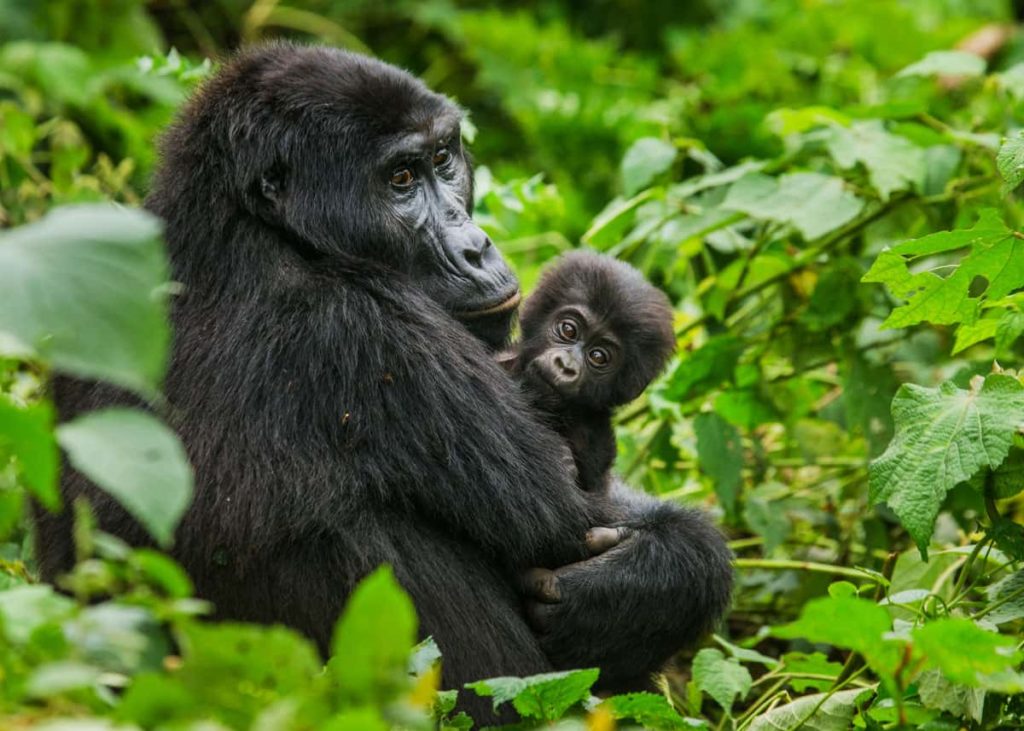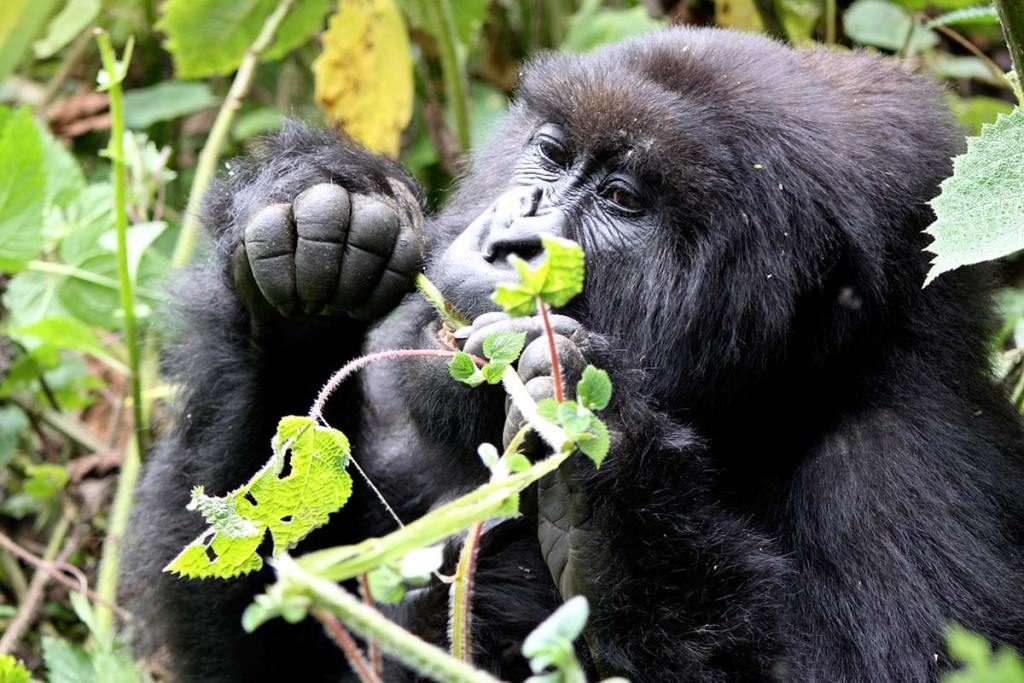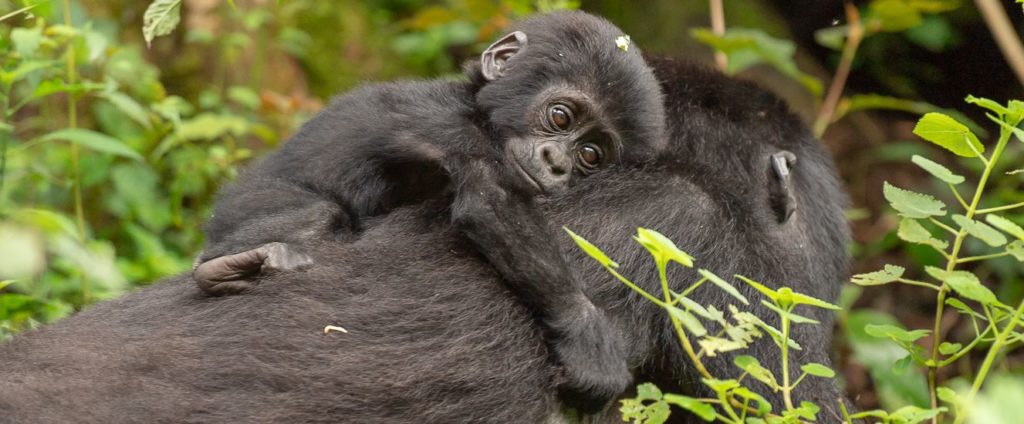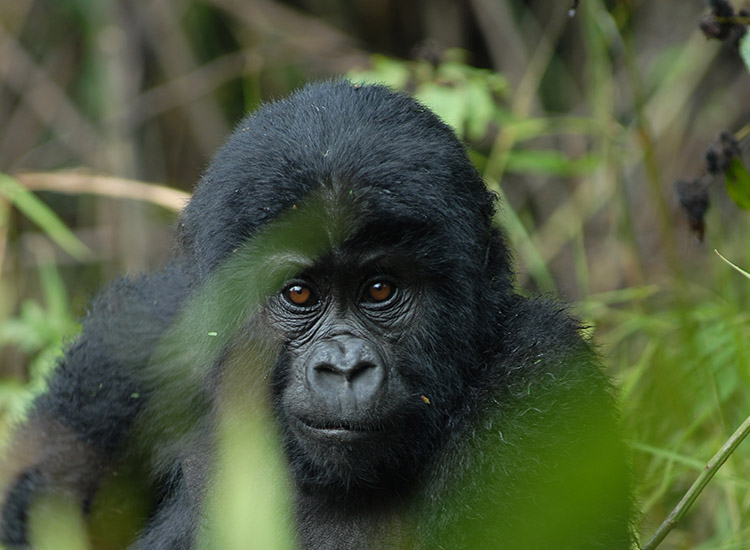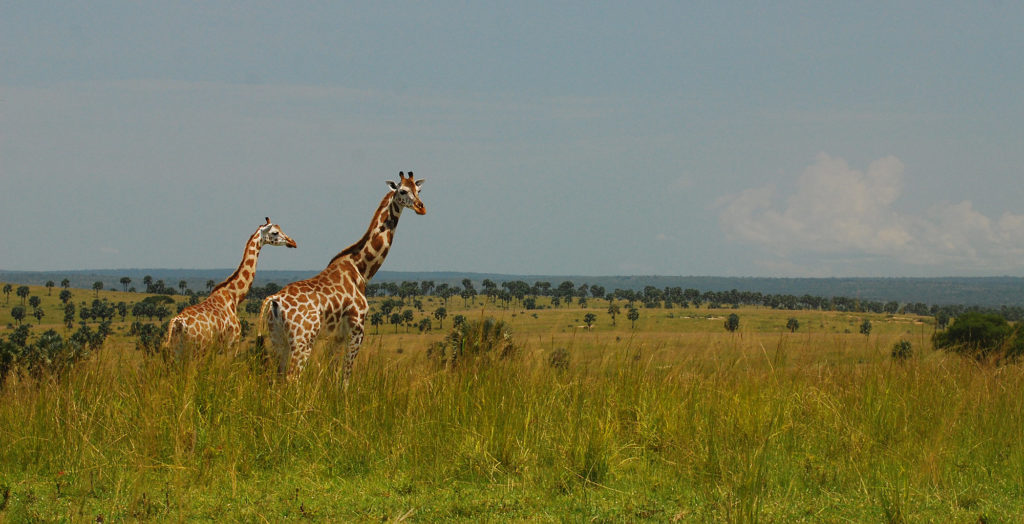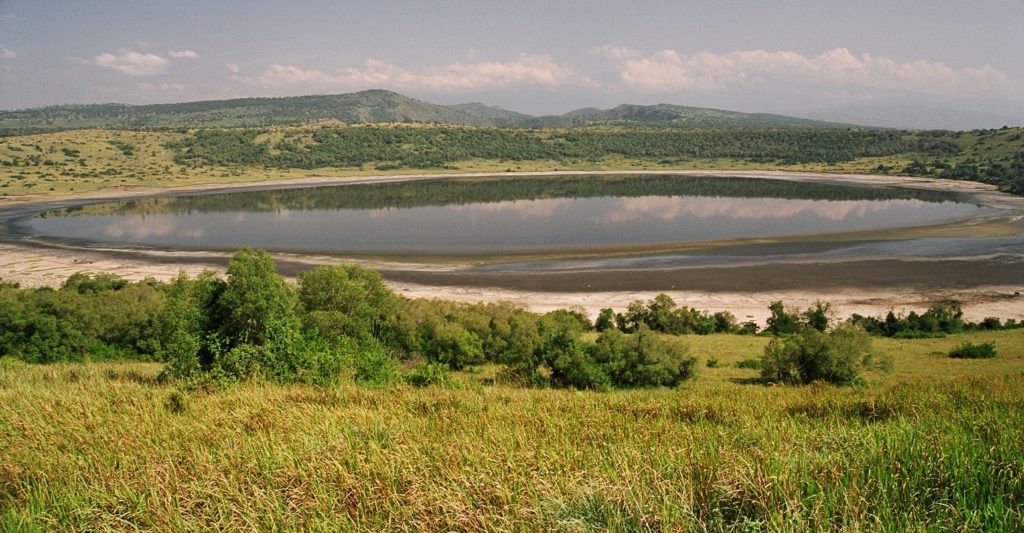Things to See & Do In Kibale National Park
Chimpanzee Tracking / Trekking
Chimps are the main attraction while on a visit to Kibale Forest. spending time with these gorgeous cousins of ours – wondering why I just called them our cousins!, humans and Chimps share up to 98.7% DNA similarities.
Most travellers visiting Kibale Forest usually indulge in the traditional 01-hour Chimp trekking safari experience that starts at 8:00 am and or 2:00 pm. The highlight of this walk is the lush flora and fauna of the forest let alone a great sighting of the chimpanzees.
Learn more about chimpanzee tracking
Chimpanzee Habituation Experience
The Chimpanzee Habituation Experience in Kibale Forest National Park starts as early as 6:00 am. With a packed lunch and all the right items of clothing and gear, you will be transferred by your guide to the agreed start point as will communicated by your guide ( the start points change based on where the chimps are located on the day you go on this experience).
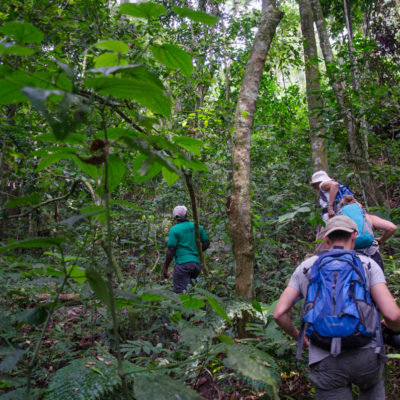
Hiking and Nature Walk
Kibale Forest activities are mostly built around walking and hiking. the forest offers a number of walking and hiking safari experiences that range from the traditional guided walks inside the forest to the more sophisticated seasonal forest walk of up to 12 kilometres. This 12 Km journey is restricted to only the dry season months of mid-November to February and June to September. It highlights the diverse habitats of the park including tropical rainforest, riverine forest, swamp and grassland. Visitors will have the chance to see a variety of birds and monkeys and sometimes duikers and bush pigs. The walk begins at 8:00 am and ends at the elephant wallow around 2:00 pm. Picnic Lunch while on this 12 Km walk is a must-have – just don’t forget to ask for one if travelling on a self-organised tour other if booked with us, our guide will give you a daily update on events.
Bigodi Swamp
Bigodi Swamp is home to up to 8 primates – Red Colobus, black and white colobus, red colobus, mangabey, red tail, vervet, and L’Hoest. Other wetlands mammals include baboons, sitatunga (an increasingly endangered swamp antelope), bush pigs, civet cats, mongooses, bushbucks and an occasional chimpanzee.
Special Note: The Bigodi Swamp Walk is a Community Project and employes Local guides and other support staff from the Bigodi Community – this is just one of the main reasons we like to add this to our itineraries.
Ambere Caves in Fort Portal
Located in Fort portal, the Ambere Cave experience is a prehistoric day tour that usually lasts between 2 – 3 hours.
What to expect: The Ambere Cave is actually not a Cave, it is high hanging but the history behind this “Cave” is what you should focus on, close the caves is a waterfall falling into a small pool which is beautiful. In addition to the Ambere Cave visit, take on the walk to the craters – very scenic.
Special Note: Only Add a Mabere “Caves” to your itinerary as a day activity Don’t have it as a Stand-Alone Activity. We also recommend that you visit it en route to or from Kibale just don’t drive from Kibale to Fort portal and back just to visit the Amabere “Caves”
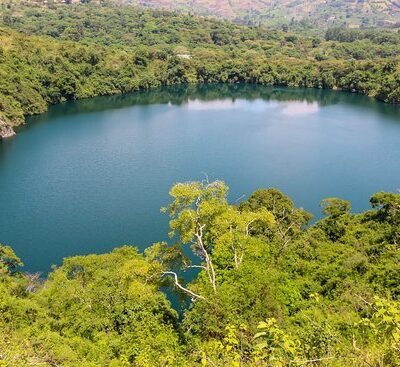
Kasenda Crater Lakes
Depending on where you are staying on your holiday to Kibale forest, there are a few properties setup at the rim of the Kasenda crater lakes. Some popular ones include; Papaya Lodge, Ndali lodge, crater safari lodge and Kyaninga Lodge.
Among the so many walks, we recommend the “Top of the world” walk. This walk as the name suggests will lead you to the highest point where you can almost have a 360° scenic view across up to 3 crater lakes and the Rwenzori Mountains. This walk usually lasts between 3 to 5 hours under the guidance of a local guide to explain the culture and lifestyle of the communities you will encounter while on this walk.
The best time to visit Kibale National Park
While Kibale National Park may be visited any time of the year, our recommendation of when its best to come is in the drier months of June to August and December to February. The rains in Uganda come mostly in April, May, November, and early December.
**Low to shoulder season is best for travel without Crowds.
Passport & Visa Requirements into Uganda
Getting in & around
From your home country, you will fly into Uganda through Entebbe International Airport (EBB) located near the town Entebbe, about 46km/29mi from the capital, Kampala.
Uganda is a relatively compact country and further transportation within the country is usually done by road, though our upmarket safaris include one or more flights. Realm Africa Safaris™ will collect you from the airport or hotel and further transportation will be part of pre-booked your Uganda safari-package.

